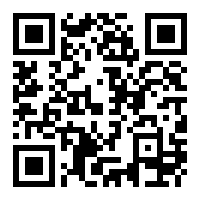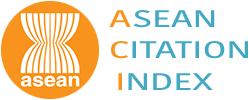Author Guidelines
Author Guidelines for the Regular Issue
1. Kesmas: Jurnal Kesehatan Masyarakat Nasional (National Public Health Journal) publishes articles in the field of public health that include Biostatistics, Epidemiology, Health Policy and Administration, Occupational Health and Safety, Environmental Health, Health Education and Behavioral Science, Public Health Nutrition, and Sexual and Reproductive Health.
2. Submitted articles must be research articles and invited review articles that should not have been previously published or are currently under consideration for publication anywhere else and free of plagiarism. Each submitted article will be checked by an application for detecting plagiarism.
3. The authors should fill out the field of the manuscript in the “Comments for Editor” box.
4. Components of Articles:
- · The line numbers should be enabled.
• The title is written in English with a maximum of 20 words.
• The author's identity is written under the title, including name, affiliation, correspondence address, phone number, and email.
• Abstract is written in English with a maximum of 200 words. The Abstract should be one paragraph covering the introduction, aim, method, results, and conclusion with a maximum of 5 keywords separated by a comma. Sort the keywords alphabetically. Do not use abbreviations in the Abstract.
• Introduction contains background, brief and relevant literature review, and the aim of the research.
• Method includes design, population, sample, data sources, techniques/instruments of data collection, data analysis procedure, and ethics.
• Results are research findings. It should be clear and concise. There should be no sources in this section.
• Discussion should argumentatively and adequately define the research results with any relevant theory and prior findings.
• Tables should be single-spaced and numbered consecutively in accordance with the presentation in the text. Figures, pictures, or formulas should be original. Ensure that each illustration has a caption. Supply captions separately, not attached to the figure. A caption should comprise a brief title (not on the figure itself) and a description of the illustration. Write in brief for the text within the illustration, but explain all symbols and abbreviations used. Rasterized-based files (e.g., with .tiff or .jpeg extension) require a resolution of at least 1,000 dpi (dots per inch). Line art should be supplied with a minimum resolution of 1,000 dpi. Tables and/or figures should be no more than 6 (six) as presented in the Results.
• Conclusion should answer problems of study not exceeding the capacity of finding. The recommendation can be added at the end of the paragraph and should refer to the aims and conclusion in the form of narration and be logical and effective.
4. Abbreviations include all abbreviations mentioned in the article (from Introduction to Conclusion).
5. Ethics Approval and Consent to Participate inform the license obtained from the institution and research subject.
6. Competing Interest states whether the author(s) have an interest in the research.
7. Availability of Data and Materials clarifies data sources or information used as research materials.
8. Authors' Contribution explains the contribution made by each author (name should be abbreviated) to the research.
9. Acknowledgment mention thank-you note to all components supporting the research, including funding (grant).
10. Additional Information confirms the authors' names if there is not enough space on the first page of the article and/or other additional information if necessary.
11. References should be written in Vancouver style.
• Please ensure that every reference cited in the text is also present in the reference list (and vice versa).
• Reference numbers must be numbered consecutively in accordance with the whole text, and recent journal references (ten years back) are preferred.
• Please write the author's name with the last name first and the first name as initials, with a maximum of 3 (three) authors' names. If there are more than 3 (three) authors, the following author should be written with "et al."
• The first letter of the reference title should be capitalized, and the remaining should be written in lowercase letters, except the name of the person, place, time, and a word after the colon “:”. Latin terms should be written in italics. The title should not be underlined and written in bold.
• Please provide the DOI number and URL of the referred article.
- · Reference should not exceed 40 sources.
• When referencing in the body of text, use superscript after a full stop (.), e.g.: ..... .(10)
If the sentence states the other author's name as a reference, use the reference number by the end of the author's name, then continue the sentence till full stop (.), e.g., Abood,(2) ……; or Latief, et al., (2)...)
Journal:
Ariawan I, Jusril H, Farid MN, et al. SARS-CoV-2 Antibody Seroprevalence in Jakarta, Indonesia. Kesmas. 2022; 17 (3): 169-174. DOI: 10.21109/kesmas.v17i3.6070. Available from: https://journal.fkm.ui.ac.id/kesmas/article/view/6070
Book:
Murray PR, Rosenthal KS, Kobayashi GS, Pfaller MA. Medical microbiology. 4th ed. St. Louis: Mosby; 2002.
Online Article:
World Health Organization. WHO highlights high cost of physical inactivity in first-ever global report. Geneva: World Health Organization; 2022. Available from: https://www.who.int/news/item/19-10-2022-who-highlights-high-cost-of-physical-inactivity-in-first-ever-global-report
Thesis and Dissertation:
Rahmiwati A. Intervensi Pendidikan Gizi berbasis Budaya Lokal Terhadap Kepatuhan Konsumsi Tablet Tambah Darah Remaja Putri di Kabupaten Ogan Komering Ilir [Dissertation]. Depok: Universitas Indonesia; 2022. 279 p.
12. Manuscript must be written in English and typed using word processors (Microsoft Word or Open Office) software. The font type for the paper is Times New Roman, with a font size of 12 and 1.5 line spacing. The paper size is A4 (e.g., 210 x 297 mm). It should be a one-column format with all margins of 3 cm and a maximum of 6,000 words, including a maximum of 40 references and 6 tables/figures. The manuscript template can be downloaded here and submitted via the website http://journal.fkm.ui.ac.id/kesmas/login.
Author Guidelines for the Special Issue
The following information is the details of section headings you should include in your manuscript and information within each section.
Kesmas: Jurnal Kesehatan Masyarakat Nasional (National Public Health Journal) publishes a special issue for non-research articles following a specific theme. All types of manuscripts must not exceed 4,000 words, including 250 words for Abstract, 40 references (using Vancouver style), and four (4) tables and/or figures. The manuscript template can be downloaded here.
Case Report
Case reports submitted to Kesmas: Jurnal Kesehatan Masyarakat Nasional (National Public Health Journal) should contribute to public health knowledge and have educational value or highlight the need for a change in public health practices or approaches. Authors should describe how the case report is rare or unusual as well as its educational and/or scientific merits in the cover letter that will follow the manuscript submission. Case report submissions will be assessed by the Editors and will be sent for peer review if considered appropriate for the journal. Case reports should include relevant positive and negative findings from history, examination, and investigation. They can consist of photographs provided by a statement that written consent to publish was obtained from the case(s). Case reports should include an up-to-date review of all previous issues in the field. Authors should seek written and signed consent to publish the information from the case(s) prior to submission.
Case Study
Kesmas: Jurnal Kesehatan Masyarakat Nasional (National Public Health Journal) welcomes well-described case studies. These will usually present a major program intervention or policy option relevant to the journal field. Manuscripts that include a rigorous assessment of the processes and the impact of the study, as well as recommendations for the future, will generally be considered favorably.
Review
Reviews are summaries of recent insights in specific research areas within the scope of Kesmas: Jurnal Kesehatan Masyarakat Nasional (National Public Health Journal). The key aims of reviews are to provide systematic and substantial coverage of a research area of wide interest or to present a critical assessment of a specified area. A review must focus on recent research and on a topic that is timely and relevant to the field. All reviews published by Kesmas: Jurnal Kesehatan Masyarakat Nasional (National Public Health Journal) are peer-reviewed. Review manuscripts may be considered at the Editor’s discretion, and their decision on consideration is considered final.
Commentary
These short, narrowly focused manuscripts of contemporary interest are usually commissioned by the journal. They are not mini-reviews. A commentary is a discussion of a manuscript or trial that was recently published, or that is soon to be published and that is interesting enough to warrant further comment or explanation. This type of commentary discusses specific issues within a subject area rather than the whole field, explains the implications of the manuscript, and puts it in context. Opinions are welcome as long as they are factually based.
Methodology
Methodology manuscripts should present a new experimental method, test, or procedure. The method described may either be completely new or may offer a better version of an existing method or compare different methods currently in use.
Opinion
Opinions are short, narrowly focused manuscripts on issues of contemporary interest, including reports about meetings or viewpoints on recently published manuscripts relevant to the readers of Kesmas: Jurnal Kesehatan Masyarakat Nasional (National Public Health Journal). Opinions should not be in the form of reviews and should not contain new data. They should be short manuscripts (ideally 500-1500 words) outlining significant progress in thinking that would also be testable, though not so easily testable that readers will wonder why the testing has not already been done.
Editorials
Editorials are written by the Editor-in-Chief and discuss current issues and related subjects.
Covering Letter and Statements
Authors must include the Covering Letter and Statements, Ethics Approval Form, and Proof of Licensed Native Proofreading in a separate file containing a summary of scientific findings and uploaded in Supplementary Files in PDF Format to complete the submission process. A copy of the ethical clearance statement for experimental research involving human and/or animal samples should be uploaded in a supplementary file.
Revision of Manuscript
Revision of the manuscript by the author consists of two steps: editor’s and reviewer’s screening revision. First-time submitted articles would be screened early by the Editorial Team to comply with Kesmas: Jurnal Kesehatan Masyarakat Nasional (National Public Health Journal) writing guidance. The Editorial Team will further inform the results of the early screening to authors by email. For authors, please resend the screening revision file by uploading it to the supplementary file at your submission service. Moreover, authors may conduct any revision of post-review by reviewers after the Editorial Team informs the results of the review through your online service, so keep tracking your online submission service to see the progress of the article process. Please notify the Editorial Team by email (jurnalkesmas2.ui@gmail.com) or WhatsApp (+62 815 1141 6600) if the revision file is already uploaded, and please resend both screening and post-review revisions to the Editorial Team by no later than 14 (fourteen) days. If such revisions are not resent to the Editorial Team for more than 3 (three) months, authors must send new submissions.
Acceptance Certificate
An acceptance Certificate is issued for the first author whose manuscripts have already been reviewed and accepted for publication by the Editor-in-chief.
Copyright and License
Submission of a manuscript implies that the authors have met any requirements of the editorial policy and publication ethics. Authors grant Kesmas: Jurnal Kesehatan Masyarakat Nasional (National Public Health Journal) a license to publish the articles and identify them as the original publisher. Authors also grant any third party the right to use the articles freely as long as their integrity is maintained and their original authors, citation details, and publisher are identified. Authors agree that their articles remain permanently open to access under the terms of the Creative Commons Attribution License 4.0 International License.































